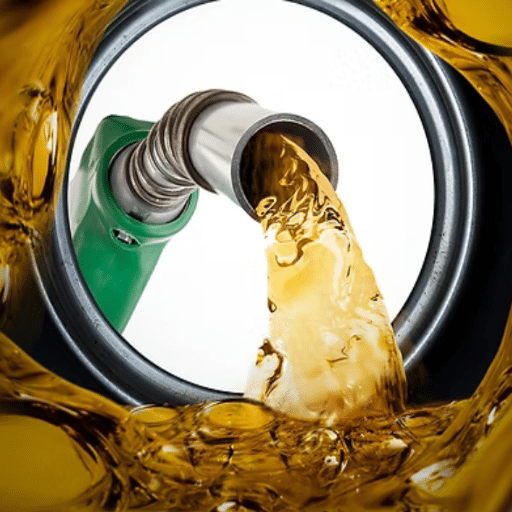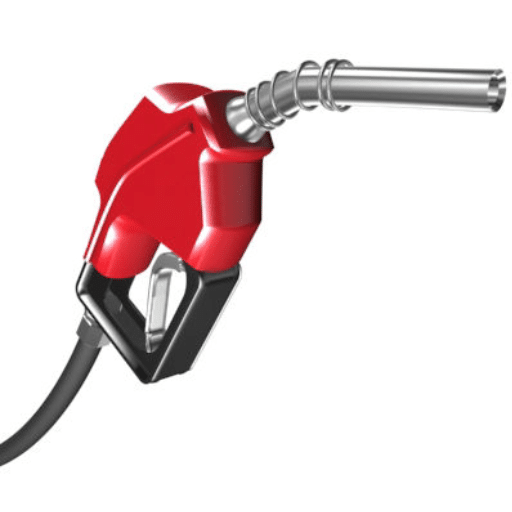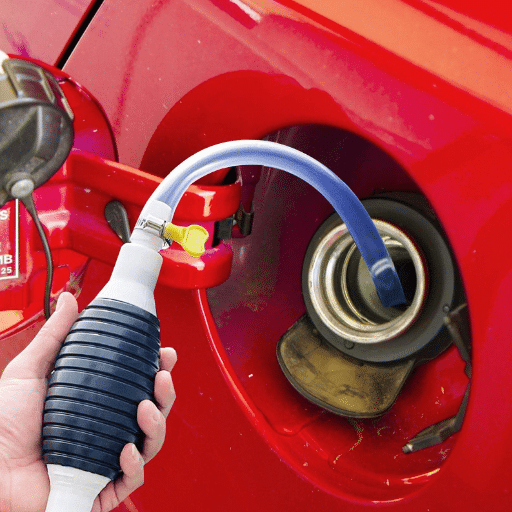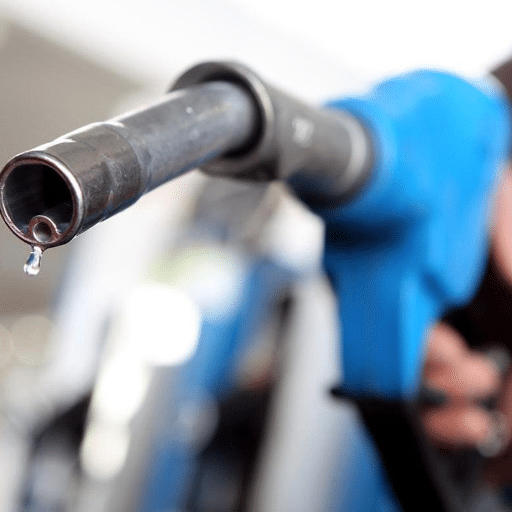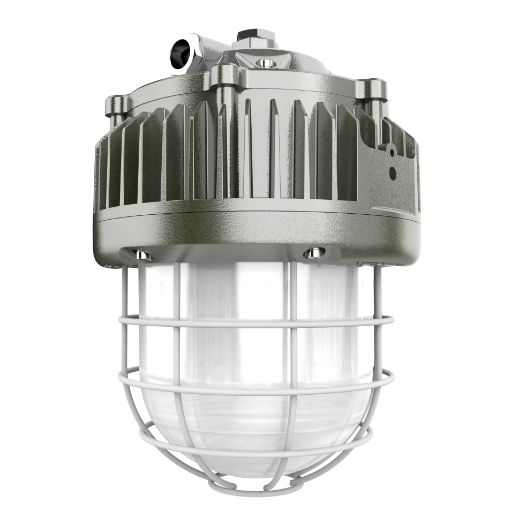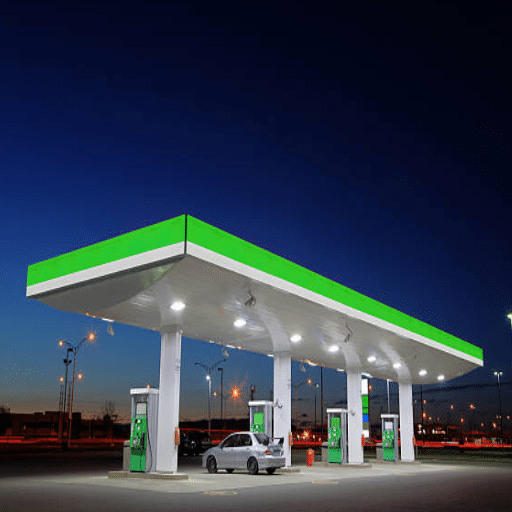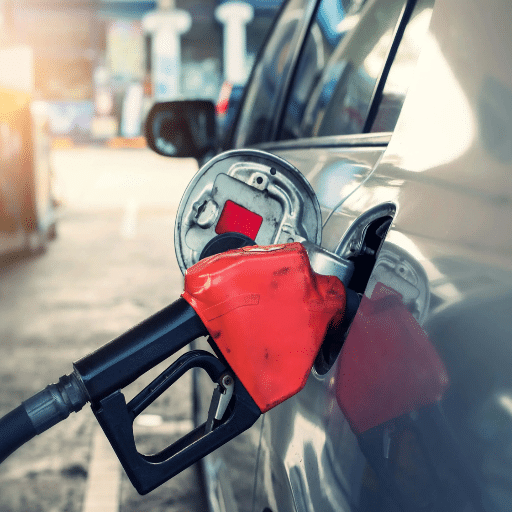Fuel dispensers are key to modern fueling stations, yet little is known about the intricate systems behind this everyday machine. From rapid and precise delivery of fuel to advanced payment integration, dispensers are a marvel of engineering built for efficiency and reliability. In this blog post, we aim to demystify fuel dispensing systems by explaining their key components. It could be interesting to any inquisitive consumer, an owner or operator of a fuel station, or a technician needing some fundamentals about which components keep dispensers running smoothly. Get ready to delve into the components of this must-have technology and learn how each one contributes to the fueling process.
Overview of Fuel Dispenser Systems

The fueling station gas dispenser system is an indispensable component with a centralized purpose: to provide a safe and efficient fuel supply to a recipient vehicle. A set of pumps, meters, and nozzles work in conjunction to provide control and measurement of fuel flow. Modern-day fuel dispensers are equipped with high-resolution digital displays that display exact transaction details and are integrated with payment systems, thereby facilitating ease of use. These latest models feature vapor recovery systems to minimize environmental impact and comply with safety regulations. These systems are reliable and user-friendly, meeting the demands of both station operators and consumers.
What is a Fuel Dispenser?
A fuel dispenser is a vital component of fueling stations, facilitating the safe and efficient transfer of fuel into vehicles. These systems are designed to pump all fuel types, including gasoline, diesel, ethanol blends, and alternative fuels like CNG and hydrogen. The dispenser primarily consists of a few basic elements, including the pump, flow meter, hose, nozzle, and a digital interface for displaying the details of the fueling process.
Modern fuel dispensers use high technology to improve their performance and safety. They have automated temperature compensators to correct the fuel volume measured against temperature changes in fuel and vapor recovery systems, preventing the emission of harmful gases and ensuring compliance with stringent environmental laws. The commercial high-flow dispensers have a fuel output rate of approximately 60 liters per minute (16 gallons per minute), making them suitable for both personal and commercial use.
The modern digital interfaces of the latest machines enable them to seamlessly integrate with prompt payment portals, mobile payment applications, and reward schemes. Being freshly rated among greener options, the said dispensers also qualify for clean energy charging for electric vehicles, biodiesel blends, and more, which testifies to their revolutionary adaptability to emerging energy trends. In this way, modern fuel dispensers remain relevant, serving the changing demands of both consumers and the fuel industry.
Importance of Fuel Dispensing in the Industry
Fuel dispensers are a critical component in the global energy supply chain, serving as the primary interface between energy producers and consumers. Beyond simply dispensing fuel, they serve to put efficiency and safety into any field while also ensuring convenience. The global fuel dispenser market is expected to grow steadily due to increasing energy needs, rising vehicle ownership, and expanding infrastructure development.
A good case in point is the integration of advanced fueling systems that cater to alternative energy sources, such as EV chargers. The demand for charging infrastructure thus rises accordingly alongside global EV sales, which are slated to surpass 14 million units by 2023. EV charge-cum-fuel dispensers make fuel stations flexible enough to meet the needs of both traditional fuel users and those with environmentally conscious preferences.
From the operational viewpoint of fuel station operators, newer versions of fuel dispensers offer enhanced functionality, including automated payment solutions, IoT integration, and data collection facilities for analytics. These systems enable minimum refueling times while reducing errors and ensuring more effective inventory management. Besides, with environmental policies and emission targets becoming stricter, fuel dispensers’ capability to switch towards handling cleaner fuel options, such as biodiesel and hydrogen, as well as other forms of renewable alternatives, becomes vital for their sustainability in the changing energy landscape.
Above all, fuel-dispensing technology remains a crucial component of the energy distribution network, catering to the dynamic needs of both industries and consumers while concurrently helping to achieve global sustainability and innovation goals.
How Fuel Dispensers Work
Fuel dispensers are designed with complex systems to facilitate an efficient and accurate transfer of fuel to a vehicle. When a user selects a fuel type and activates the dispenser, a pump inside the dispenser draws fuel from an underground storage tank through a pipeline. Modern systems use either submersible pumps or suction pumps, depending on the station design.
A flow meter inside the dispenser measures the amount of fuel transferred to ensure exact dispensing. Advanced dispensers utilize technologies such as positive displacement or Coriolis flow meters to ensure accurate dispensing. Electronic sensors also continuously monitor the whole dispensing operation to ascertain that there is no overflow or error during dispensing.
Most dispensers are equipped with safety features, including automatic shut-off valves that close when the tank is full, preventing spills and ensuring environmental protection. Additionally, high-grade dispensers also feature vapor recovery systems to minimize the emission of vapors into the atmosphere during refueling, by modern ecological standards.
Fuel dispensers are equipped with user-interface capabilities, such as touchscreens or keypads, enabling customers to interact with them smoothly. Backed by secure payment processing, transactions are handled swiftly and securely. According to the latest industry trends, some dispensers are now cloud-integrated, enabling real-time monitoring, remote diagnostics, and predictive maintenance, which reduces downtime and maximizes performance.
This integrated technology stack ensures that fuel dispensers remain a leading part of energy distribution, dispensing fuel accurately, safely, and in an environmentally responsible manner.
Main Parts of the Fuel Dispenser
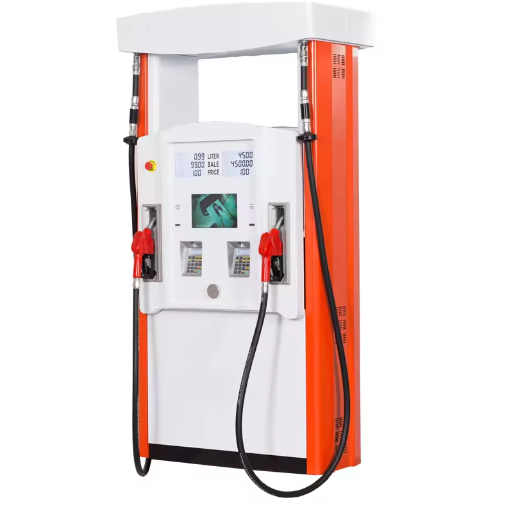
The fuel dispenser consists of the following major sections:
Hydraulics Systems:-pumping fuel from the underground storage tank into the vehicle. It comprises a pump, valves, and meters to ensure the correct flow and measurement.
Metering Unit: The unit ensures that the volume of fuel dispensed is measured accurately, thereby averting human errors.
Hoses/Nozzles: For dispensing into the vehicle. The nozzle is often equipped with an auto shut-off device to prevent overfill.
Electronic Control System: The electronics manage the operation of dispensers in various functions, including pricing, volume display, and communication with central systems.
Safety Systems: Pressure relief valves, emergency shut-off valves, and anti-bleed apparatuses are installed to ensure safety during fuel dispensing operations. Each system is interlinked, striking a balance between efficiency, accuracy, and safety.
Fuel Pump: The Heart of the System
In the new-age fuel dispensers, the fuel pump forms the backbone of the entire system, capable of efficiently channeling fuel from the storage tank to the receiving vehicle. The latest generation of fuel pumps is designed to consume the least amount of energy, with some models currently reaching as high as 90% energy efficiency, thereby reducing the operational costs of the particular fuel station. Such pumps are fitted with precision-engineered components, for instance, variable-speed motors, that regulate flow rates in a manner that supports the rate of fuel delivery to vehicles.
This technological enhancement of fuel pumps aims to achieve higher durability and reduced maintenance requirements. Thus, materials such as stainless steel and highly corrosion-resistant alloys are utilized to provide resistance to environmental degradation and prolonged exposure to fuel types. A few pumps come equipped with self-diagnosing facilities that alert operators to problems, such as leaks or drops in pressure, immediately, thereby reducing downtime and increasing safety.
Along the lines of smartifying, fuel pumps now leverage IoT-enabled sensors and real-time monitoring. These systems provide insights into consumption patterns and forecast maintenance, helping to streamline operations and reduce operating costs for station operators. In this manner, we often witness technological breakthroughs in fuel pumps that keep them ahead of the curve in the fueling system.
Metering System: Accurate Measurement of Fuel
Metering systems are crucial for accurately measuring fuel during dispensing. Modern metering technologies utilize advanced flow meters, specifically dispensers that employ positive displacement or turbine meters, which have been calibrated to rigorous standards. Metering devices intended for high accuracy should, many times, achieve a ±0.2% tolerance level to ensure the measurement provides the customer precisely what they pay for.
Electronic metering systems now offer integration with digital interfaces and control units, enabling device-to-device communication and facilitating the capture of real-time data. Many systems can handle various fuel grades with different calibrations, maintaining their accuracy for the given fuel type. Temperature compensation for fuel thermal expansion is another crucial feature for maintaining consistent quantities in a varied environment.
For such an operator using advanced metering systems, it appears that errors and discrepancies will be reduced to approximately 95%. This will undoubtedly increase customer confidence through increased transparency of the operation. As new technologies evolve, the metering system remains a crucial factor in the modern fuel infrastructure, ensuring consistent and reliable operation within international standards.
Dispensing Nozzle and Hose: User Interaction Components
The nozzle and hose are the physical interfaces for fuel stations, where the fuel station infrastructure interfaces with the end-user. With ergonomics as the foundation, modern nozzles facilitate comfortable handling and optimize fuel transfer efficiency. The shutoff function stops accidental overfilling and protects against hazards during fuel delivery. Commercial users also tend to increase the use of high-flow nozzles to speed up refueling.
Fuel hoses, molded from durable, highly flexible materials such as reinforced rubber or thermoplastics, are designed to resist exposure to weather and the chemical properties of various fuels. Studies have shown that advanced hoses can withstand pressures over 300 PSI, bearing testimony to their durability and reliability. New advances include the integration of vapor recovery systems into hoses, which reduces emissions and provides a greener way to fuel, thereby complying with stringent environmental regulations.
Again, these user-oriented components are continuously evolving, combining durability, safety, and ease of use to ensure a smooth and safe refueling experience. Their contributions to maximizing customer satisfaction, operational efficiency, and regulatory compliance underscore their relevance in modern fuel station systems.
Fuel Dispenser Components and Their Functions
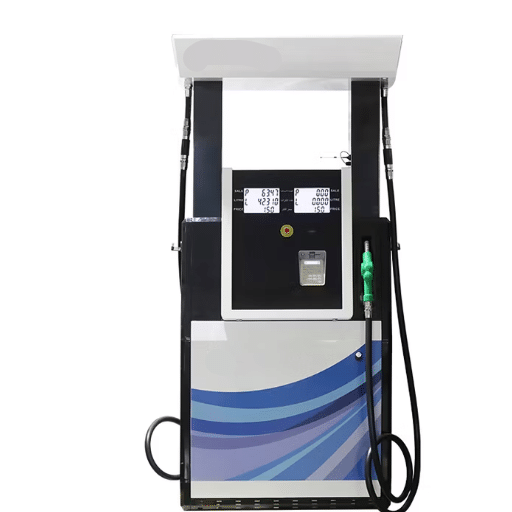
There are several components of fuel dispensers; each one plays a vital role.
Nozzle: To fill the vehicle’s tank, fuel is dispensed from the dispenser through the nozzle, which is fitted with an automatic shut-off to prevent spills.
Hose: The path of fuel extends from the dispenser to the nozzle, and it must withstand high pressure while preventing leaks.
Pump: To push the fuel from the storage tank to the dispenser at a consistent flow.
Meter: To keep an accurate measurement of the fuel quantity dispensed for billing purposes.
Display Screen: It displays essential information, such as the amount of fuel dispensed, cost, and sometimes additional prompts or advertisements.
Keypad/Control Interface: Customers use this interface to select the fuel type, enter payment information, and interact with the dispenser system in other ways.
All the listed components work together to ensure the efficient, safe, and accurate delivery of fuel.
Control Systems: Managing Dispensing Operations
Advanced control systems support fuel dispensers to ensure accurate, precise, safe, and proper operations. These systems have integrated the latest technology to monitor all aspects of the fuel dispensing process. For example, PLCs are used to automate various tasks such as fuel flow measurement, pump control, and safety interlocking.
This system utilizes sensors and monitoring devices to provide real-time data on fuel levels, flow rates, and dispenser status, enabling the management of dispenser operations and minimizing the impact of human error or manual administration. Industry statistics indicate that high-precision sensors for fuel dispensers can achieve accuracy levels of ±0.25%, which is essential for maintaining customer confidence and meeting regulatory requirements.
The control systems also provide a remote monitoring facility, allowing an operator to monitor a plurality of dispensers across multiple locations from a centralized, web-hosted platform. These platforms usually include analytics tools that can predict maintenance requirements, report on fuel trends, and suggest optimisations for inventory management. For example, data generated from IoT-enabled bright dispensers can improve operations by up to 20% in terms of downtime reduction through predictive maintenance alerts, thereby setting new standards for fuel dispensing reliability and efficiency.
Safety Features: Ensuring Safe Fuel Dispensing
Modern fuel dispensers are equipped with various safety features that ensure user and environmental safety. Firstly, unlike conventional dispensers, these are designed to provide an automatic shut-off when the tank is full, reducing the chances of spillage. Vapor recovery systems also work wonders in this regard, capturing up to 98% of the emissions that occur during refueling, further preventing air pollution and ensuring compliance with environmental standards.
Emergency stop buttons are incorporated into these systems wherever required, providing both the user and the attendant with the ability to immediately cut off power to the dispenser in the event of hazards such as fire or a fuel leak. Other safety measures include pressure-relief valves and breakaway couplings to limit dangers caused by overpressure or accidental pull-away. Monitored systems utilize leak or flow irregularity detection to alert operators to potential problems immediately.
Taking advantage of the ever-increasing level of technology connectivity, some dispensers now employ IoT-based sensors for continuous monitoring and, in response to anomalies, automatically initiate safety protocols. Altogether, these improvements greatly enhance the standards of safety and integrity at fuel stations.
Fuel Storage Tanks: The Source of Fuel Supply
Fuel storage tanks serve as the primary reservoirs for petroleum products, ensuring a steady supply to fuel stations and other end-users. Due to environmental exposure, these tanks are typically constructed from durable materials such as steel or fiberglass to prevent leakage or contamination. There are just two significant types of fuel storage tanks commonly used: above-ground storage tanks (ASTs) and underground storage tanks (USTs). ASTs are easy to inspect and maintain, whereas USTs save space and are protected from weather, albeit they require stringent supervision to ensure that contamination does not occur from soil or groundwater.
The capacity of fuel storage tanks worldwide varies from location to location and depends on the purpose for which they are used. For instance, the large commercial fuel depots will have tanks capable of holding millions of gallons, while smaller fuel stations will use tanks that range from about 10,000 to 50,000 gallons. In general, more sophisticated systems, such as automated tank gauges (ATGs), are adopted to monitor fuel levels, detect any leakage, and ensure full compliance with environmental regulations. Reports indicate that an increased use of double-wall tanks and secondary containment has undoubtedly contributed to a reduced risk of spills and enhanced overall safety.
At the same time, the need for environmentally sustainable means has benefited the design of fuel storage systems. For example, modern tanks may be lined with corrosion-resistant coatings or constructed from newer materials to maximize their service life while minimizing environmental impact. Some have gone further to introduce renewable energy means; one great example being solar-powered tank monitoring systems, thereby further boosting efficiency and cutting down carbon footprints. While examining the evolution of fuel storage and containment, it becomes evident that without storage tanks, all energy would come to a halt. These developments, however, bear testimony to how storage tanks form the rails that fuel the energy infrastructure in their confrontation with safety, compliance, and environmental challenges.
Maintenance of Fuel Dispenser Parts

Regular maintenance of fuel dispenser parts is crucial for prolonging their service life and ensuring reliable operation. Some important points to consider are:
Cleaning Nozzles and Hoses – Regularly inspect and clean to prevent buildup and allow for free flow.
Checking Filters – Periodically change them to prevent contamination from entering the system and maintain fuel quality.
Inspect Seals and Fittings – All seals and fittings must be tight to prevent leaks.
Software Updates – Keep the system software up to date to improve functionality and security.
Routine Inspections – Regularly schedule inspections performed by professionals for early detection and solving of problems.
The practice of these types ensures that it performs well and prevents downtime.
Regular Checks and Inspections
Regular inspections and servicing are crucial for maintaining equipment capacity over the long term, ensuring efficient, safe, and cost-effective operation. Studies suggest that proper maintenance of equipment can extend its useful life by 20-40% and reduce serious failures by up to 70%. During these inspections, key considerations include wear and tear, ensuring parts function correctly, and addressing issues such as early corrosion, loose fittings, or blocked filters.
For example, predictive maintenance can provide industries such as manufacturing with numerous benefits by utilizing sensors and analytics to predict breakdown incidents. It is said that predictive maintenance will reduce maintenance costs by 25% and unplanned downtime by about 50%. Servicing should be carried out according to the OEM’s procedures using proper parts to ensure compatibility and satisfactory performance.
Maintaining an inspection and servicing log also helps track trends over time, aiding in informed decision-making and preventing recurring faults. Adopting an aggressive inspection regime and maintaining timely servicing are, therefore, crucial aspects of operational reliability and compliance with legal safety regulations, thereby reducing the adverse environmental impact of operations.
Common Issues and Troubleshooting
In many common occurrences involving fuel dispenser parts, I encounter wear and tear on the seals or hoses, which can cause leaks or reduced efficiency. Metering units often get faulty as another major issue, causing inaccurate fuel measurement. Additionally, basic electronics such as card readers or display screens may malfunction when exposed to weather conditions or due to normal wear and tear. Maintenance has always been essential, and in any case, replacing faulty parts promptly is necessary to keep things running smoothly.
Replacement of Worn-Out Parts
Fuel dispensers require proper maintenance to remain reliable, efficient, and long-lasting. Here are some essential practices:
Regular Inspection: Conduct thorough inspections periodically to monitor wear and tear, including on seals, hoses, and nozzles. Early detection of any type of anomaly will help prevent leaks and more extensive repairs.
Calibration and Testing: Metering units are regularly calibrated to ensure accurate fuel measurement. Function testing is undertaken after repair or part replacement.
Electrical Components Maintenance: Protecting electronic components, such as card readers, processors, and display screens, from weather exposure ensures optimal function. Clean and inspect these items to ensure they continue to function smoothly.
Scheduled Cleaning: Keep nozzles, filters, and pumps clean and free of debris. If anything, dirt or debris builds up, it can significantly reduce efficiency or cause mechanical failure.
Repairs on Time: Repairs should be made promptly for any leaks or pressure irregularities, or if error messages appear, to limit long-term damage and avoid downtime.
Use Good Quality Parts: Replace damaged parts with components recommended by the manufacturer, ensuring the restoration of the equipment and honoring warranty provisions.
Maintain Records of Maintenance: Keep an account of inspections, repairs, and replacements of parts. These will report on dispenser health and help provide proof of compliance with regulations.
In this way, a fuel dispenser will be efficiently supported by its management and remain free from breakdown, thereby providing a friendly experience for customers.
Future Trends in Fuel Dispensing Technology
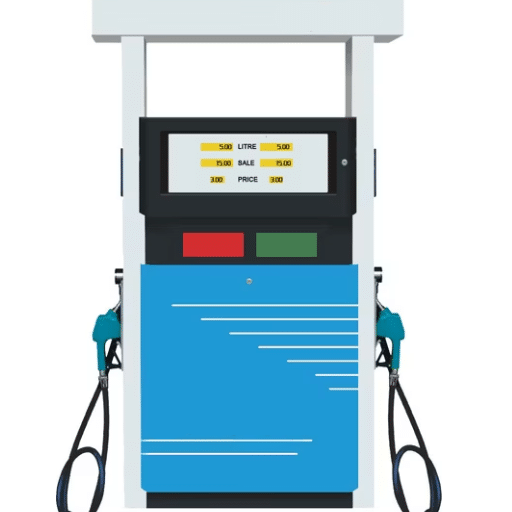
The fuel dispensing industry is evolving rapidly, adopting new approaches to enhance efficiency, sustainability, and the overall customer experience. Some pertinent trends include:
Contactless Payment Systems: With the widespread adoption of mobile wallets, customers are increasingly opting for faster and more convenient options.
Integration of Electric Vehicle (EV) Charging Stations: Numerous fuel stations are utilizing EV chargers due to the increasing acceptance of electric vehicles.
Enhancement of Analytical Data: The use of software enables real-time monitoring of dispenser performance, efficient inventory management, and the prediction of maintenance requirements, thereby reducing operational expenses.
Sustainable Fuel Options: Dispensers are being designed with provisions for alternative fuels, such as hydrogen and biofuels, as well as more environmentally friendly options.
Automation and Self-Service: Utilizing automation and self-service features, such as app-controlled fueling or cashierless kiosks, streamlines the refueling process while reducing wait times.
These trends will help modernize fuel stations and address sustainability concerns, providing consumers with greater convenience.
Emerging Technologies in Fuel Dispensers
Emerging technologies in fuel dispensers are indeed transforming the entire refueling experience. Bright dispensers with connected features enable real-time monitoring, predictive maintenance, and efficient inventory management, ensuring operations never fall into disarray. Contactless payments are being accepted at an ever-increasing rate through NFC and mobile apps, offering an additional layer of convenience and security. Likewise, multi-fuel dispensers have advanced to the point that one station can handle the dispensing of hydrogen, CNG, LNG, and EV charging, which transitions toward green energy. These innovations aim to optimize operational infrastructure while advancing the goals of an environmentally friendly energy infrastructure.
Eco-Friendly Fuel Dispensing Solutions
I think these dispensing units for ecological fuels will be needed to secure a sustainable future. By providing technologies for alternative fuels such as hydrogen, CNG, LNG, and EV charging, we, on the other hand, reduce our dependence on fossil fuels, resulting in lower carbon emissions. Besides reducing carbon footprints, these improvements enhance operation and prepare for greater demands for cleaner energy.
Integration of Smart Technology in Fuel Dispensers
The integration of innovative technology in the fuel dispensing sector marks a significant revolution, enhancing efficiency, convenience, and sustainability. Present-day fuel dispensers feature IoT-enabled systems that enable devices to communicate with one another or with a centralized management platform. These systems enable real-time monitoring of fuel levels, equipment status, and energy consumption, allowing businesses to optimize their operations and prevent downtime.
According to industry reports, the growing adoption of digital payment solutions and asset management tools is expected to drive considerable growth in the global smart fueling system market. These systems come equipped with capabilities such as touchless payment methods, vehicle recognition via RFID, and app-based control of fueling, further amplifying the customer’s experience while securing the transaction.
Predictive maintenance, enabled by AI and machine learning, is furthermore transforming into a vital feature of bright fuel dispensers. They analyze sensor data and identify when equipment is likely to fail, thereby lowering repair expenses and ensuring continuous service opportunities. Additionally, the oval integration with renewable energy sources, such as solar panels or energy storage solutions, provides further benefits on the green side.
Therefore, bright fuel dispensers pave the way for a sustainable energy infrastructure that is technologically advanced and tailored to the ever-evolving needs of consumers and businesses.
Reference Sources
1. Consumer Protection Related to Dispensing Pump Manipulation in SPBU (Gas Station)
2. Petroleum Filling Stations and Their Impact on the Environment in Nigeria
Frequently Asked Questions (FAQs)
What are the essential names of fuel dispenser parts?
The essential fuel dispenser parts include the fuel nozzle, flow meter, pump, and various internal components. These components work together to ensure reliable fuel dispensing at gas stations, enabling safe and efficient fueling operations.
How does a fuel flow meter fuel nozzle work?
A fuel flow meter or fuel nozzle measures the volume of fuel being dispensed. It ensures accurate measurement and helps in tracking the amount of gasoline or diesel being pumped. This component is crucial for maintaining accuracy in transactions and preventing fuel loss.
What are the common issues affecting fuel dispensing equipment?
Common issues affecting fuel dispensing equipment include clogged filters, blocked fuel lines, and worn internal components. These issues can impair the dispenser’s performance and may necessitate maintenance or replacement of parts to ensure optimal operation.
What is the role of a pump in a petrol pump system?
The pump in a petrol pump system is responsible for moving fuel from the storage tanks to the dispenser nozzle. It can be a vane pump or a centrifugal pump, and it must operate efficiently to provide a steady flow of fuel while minimizing noise and energy consumption.
How do explosion-proof motors contribute to safe operation?
Explosion-proof motors are designed to operate safely in potentially hazardous environments, such as those found in areas where fuel is dispensed. They prevent ignition of flammable vapors, ensuring a safe operation of the fuel dispenser and reducing the risk of accidents.
What should I consider regarding local installation requirements for fuel dispensers?
When installing fuel dispensers, it’s essential to consider local installation requirements, such as building permits, safety regulations, and environmental guidelines. Compliance with these regulations ensures the safe and legal operation of the fuel dispensing equipment.
How can contaminated fuel affect a fuel dispenser?
Contaminated fuel can lead to clogged filters and damaged internal components within the fuel dispenser. It can also affect the performance of the fuel flow meter, leading to inaccurate measurements and potentially harmful situations for both the dispenser and the vehicle being fueled.
What is a multi-product dispenser range?
A multi-product dispenser range refers to fuel dispensers capable of dispensing various types of fuel, such as gasoline, diesel, and kerosene, from a single unit. This versatility allows gas stations to cater to a broader range of customer needs while optimizing space and resources.
What are the benefits of using digital control in fuel dispensing?
Digital control in fuel dispensing provides increased measurement accuracy, ease of operation, and enhanced safety features, including activated safety shutoffs. It enables better monitoring of fuel transactions and can improve the overall efficiency of the dispensing process.

